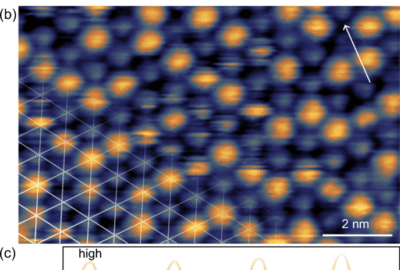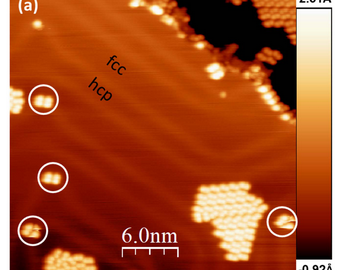publications, Réseau
Artificial Graphene Spin Polarized Electrode for Magnetic Tunnel Junctions
2D materials offer the ability to expose their electronic structure to manipulations by a proximity effect. This could be harnessed to craft properties of 2D interfaces and van der Waals heterostructures in devices and quantum materials. We explore the possibility to create an artificial spin polarized electrode from graphene through proximity interaction with a ferromagnetic insulator to be used in a magnetic tunnel junction (MTJ). Ferromagnetic insulator/graphene artificial electrodes were fabricated and integrated in MTJs based on spin analyzers. Evidence of the emergence of spin polarization in proximitized graphene layers was observed through the occurrence of tunnel magnetoresistance. We deduced a spin dependent splitting of graphene’s Dirac band structure (∼15 meV) induced by the proximity effect, potentially leading to full spin polarization and opening the way to gating. The extracted spin signals illustrate the potential of 2D quantum materials based on proximity effects to craft spintronics functionalities, from vertical MTJs memory cells to logic circuits.
Victor Zatko*, Regina Galceran, Marta Galbiati, Julian Peiro, Florian Godel, Lisa-Marie Kern, David Perconte, Fatima Ibrahim, Ali Hallal, Mairbek Chshiev, Benjamin Martinez, Carlos Frontera, Lluìs Balcells, Piran R. Kidambi, John Robertson, Stephan Hofmann, Sophie Collin, Frédéric Petroff, Marie-Blandine Martin, Bruno Dlubak*, and Pierre Seneor*
Comments are closed






